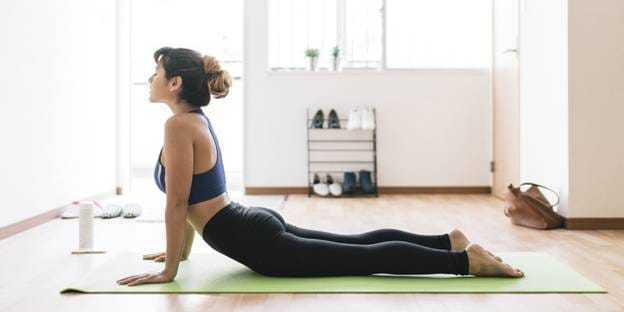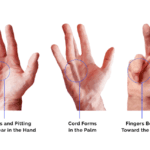Introduction
Arm pain can significantly impact daily activities, making even simple tasks difficult. Whether caused by injury, overuse, or chronic conditions, managing this pain is crucial for maintaining a good quality of life. Physiotherapy exercises are a highly effective way to alleviate arm pain, improve mobility, and strengthen the muscles involved. This comprehensive guide will explore the top 10 physiotherapy exercises for arm pain relief, their benefits, and frequently asked questions about arm pain and physiotherapy.
1. Pendulum Exercise
The pendulum exercise is a simple yet effective way to relieve shoulder and arm pain. It helps to increase the range of motion in the shoulder joint and can be particularly beneficial after surgery.
How to Perform:
- Stand or sit and lean forward slightly, letting your affected arm dangle.
- Use your other hand to support your body on a table or chair.
- Gently swing your arm in small circles, gradually increasing the circle size.
- Perform this exercise for about 1-2 minutes.
Benefits:
- Reduces stiffness and increases shoulder mobility.
- Gentle on the shoulder joint, making it suitable for post-surgical recovery.
2. Cross Arm Stretch
This stretch targets the muscles at the back of the shoulder and upper arm, which are often tight and contribute to arm pain.
How to Perform:
- Bring one arm across your body at chest level.
- Use your opposite hand to push the arm closer to your body.
- Hold for 20-30 seconds, then switch arms.
Benefits:
- Improves flexibility in the shoulder and upper back.
- Helps alleviate pain associated with poor posture and muscle tightness.
3. Wrist Flexor and Extensor Stretch
These stretches target the muscles of the forearm and wrist, which are often strained during repetitive activities like typing.
How to Perform:
- Extend your arm in front of you with your palm facing up.
- Use your other hand to gently pull back on your fingers, stretching the underside of your forearm.
- Hold for 20-30 seconds and then switch to the other arm.
Benefits:
- Reduces tightness and improves flexibility in the wrist and forearm.
- Helps prevent conditions like carpal tunnel syndrome.
4. Wrist Rotations
Wrist rotations help to increase flexibility and strength in the forearm and wrist, which can reduce pain from repetitive strain injuries.
How to Perform:
- Sit with your elbow bent at 90 degrees and your forearm parallel to the ground.
- Rotate your wrist so your palm faces up, then rotate it back down.
- Repeat this movement 10-15 times on each side.
Benefits:
- Improves wrist flexibility and forearm strength.
- Prevents and relieves pain from repetitive motions.
5. Shoulder Rolls
Shoulder rolls are a gentle exercise that can help alleviate tension and pain in the shoulders and upper arms.
How to Perform:
- Stand or sit with your back straight.
- Slowly roll your shoulders up, back, and down in a circular motion.
- Repeat 10 times, then reverse the direction.
Benefits:
- Relieves tension in the shoulder muscles.
- Improves circulation and reduces stiffness.
6. External Band Rotation
Using a resistance band, this exercise targets the rotator cuff muscles, which play a critical role in shoulder stability.
How to Perform:
- Attach a resistance band to a stable object at elbow height.
- Hold the band with your elbow bent at 90 degrees and rotate your arm outward.
- Return to the starting position and repeat for 10-15 reps on each side.
Benefits:
- Strengthens the rotator cuff, reducing the risk of shoulder injuries.
- Enhances shoulder stability and function.
7. Lateral Raises
Lateral raises strengthen the deltoid muscles in the shoulder, helping to alleviate pain and improve shoulder function.
How to Perform:
- Hold a dumbbell in each hand with your arms at your sides.
- Slowly raise your arms to the side until they are parallel to the floor.
- Lower back down and repeat for 10-12 reps.
Benefits:
- Builds shoulder strength and stability.
- Helps in reducing pain caused by muscle imbalances.
8. Doorway Stretch
This stretch targets the chest and anterior shoulder muscles, which can become tight and contribute to arm pain.
How to Perform:
- Stand in a doorway with your arms on the doorframe at a 90-degree angle.
- Lean forward until you feel a stretch in your chest and shoulders.
- Hold for 20-30 seconds.
Benefits:
- Improves flexibility in the chest and shoulder muscles.
- Helps alleviate pain related to tightness and poor posture.
9. Hand Tendon Glide
This exercise is particularly useful for improving the mobility of the fingers and reducing pain in the hand and forearm.
How to Perform:
- Start with your hand and fingers straight.
- Slowly bend your fingers to touch your palm, one joint at a time.
- Reverse the motion and repeat 10 times.
Benefits:
- Increases flexibility and reduces stiffness in the fingers and hand.
- Helps in managing conditions like tendonitis and carpal tunnel syndrome.
10. Wrist Side Bends
This exercise strengthens the muscles on the sides of the wrist, helping to alleviate pain from repetitive strain.
How to Perform:
- Rest your forearm on a table with your hand hanging off the edge.
- Move your hand side to side, bending at the wrist.
- Perform 10-15 reps on each side.
Benefits:
- Improves wrist strength and flexibility.
- Reduces pain associated with repetitive strain injuries.
Frequently Asked Questions
Q1: How often should I perform these exercises to see results?
- A: Consistency is key. Aim to perform these exercises at least three to five times a week. Regular practice will help strengthen the muscles, improve flexibility, and alleviate pain over time.
Q2: Can I perform these exercises if I’m experiencing severe pain?
- A: If you’re experiencing severe pain, it’s crucial to consult with a healthcare provider before starting any exercise routine. They can help determine whether these exercises are appropriate or if you need a modified approach.
Q3: How long does it take to see improvement in arm pain with these exercises?
- A: Improvement can vary depending on the severity of the pain and the underlying condition. Some individuals may notice relief within a few weeks, while others might take longer. Patience and consistency are essential.
Q4: Are these exercises suitable for everyone?
- A: While these exercises are generally safe, they may not be suitable for everyone, especially those with specific injuries or conditions. It’s always best to consult with a physiotherapist or healthcare provider before starting a new exercise regimen.
Q5: Can these exercises prevent arm pain from recurring?
- A: Yes, regular practice of these exercises can strengthen the muscles, improve flexibility, and help prevent the recurrence of arm pain. However, it’s also important to address any contributing factors, such as poor posture or repetitive strain, to achieve long-term relief.
Conclusion
Physiotherapy exercises are a powerful tool for managing and relieving arm pain. By incorporating these exercises into your daily routine, you can improve your mobility, strengthen your muscles, and reduce pain. Remember to consult with a healthcare provider before starting any new exercise program, especially if you have an existing injury or chronic condition. With consistency and proper technique, these exercises can help you achieve lasting relief from arm pain.





